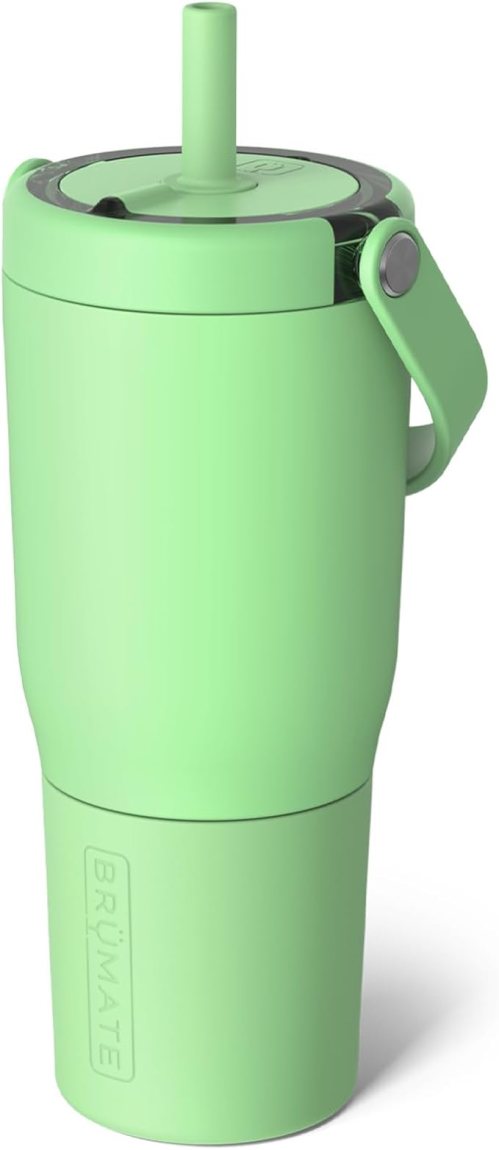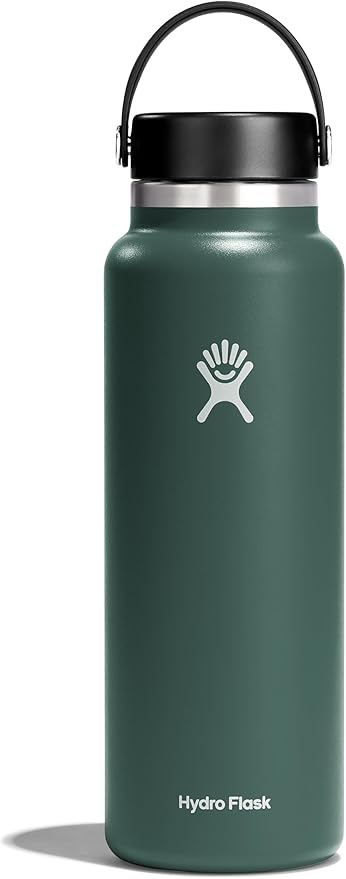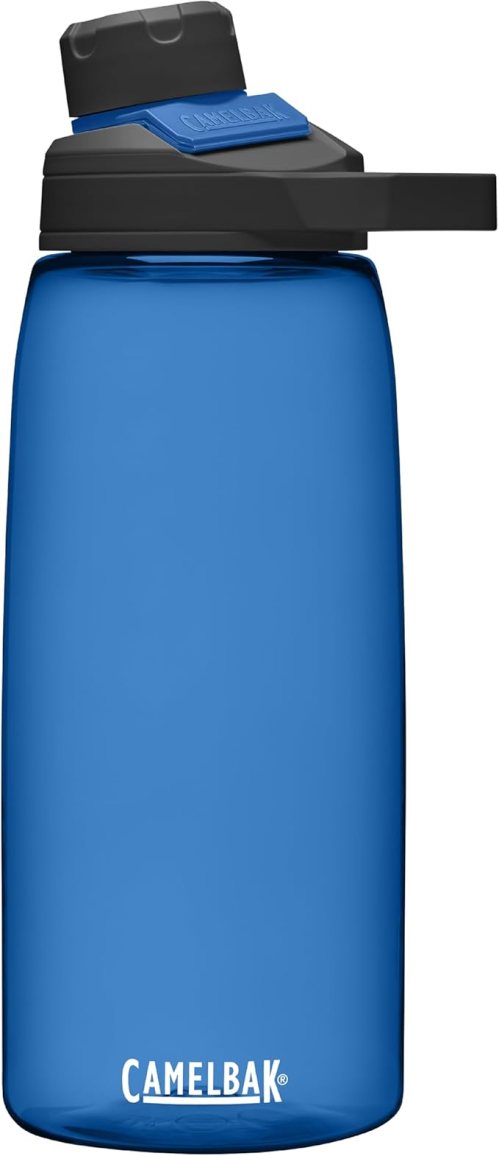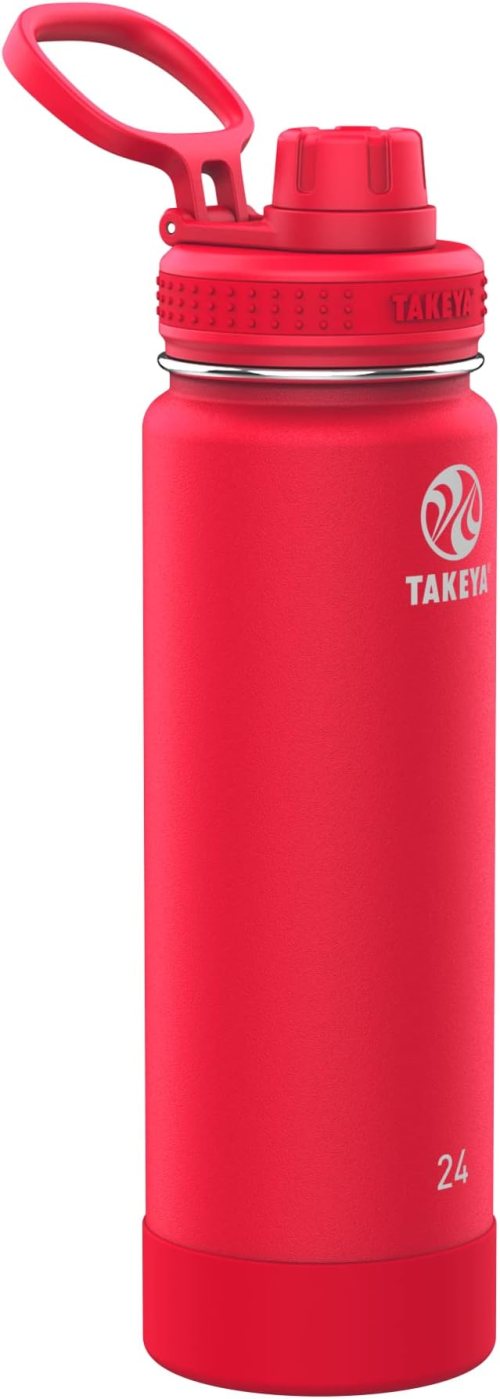Our editors independently select these products. Making a purchase through our links may earn Well+Good a commission
3 Ways To Tell Your Insulated Water Bottle Needs To Be Replaced (Plus 6 Great Bottles To Swap In)
Odds are your reusable water bottle needs to be replaced due to damage or bacterial infestation. Here's how to tell, plus 6 new bottles to swap in.

I’ll never forget the time I was introduced to insulated water bottles. As a fervent hot yoga enthusiast at the time, regularly sipping on steamier-than-room-temp H2O while overheating wasn’t as quenching as I’d have wished it to be.
Experts in This Article
a food safety expert and corporate director of technical training and consulting at Microbac Laboratories
A friend of a friend was raving about her Hydro Flask, so I had to buy one of my own—and it was completely game-changing. I loved it so much that I used it both on and off my mat, day in and day, out for a handful of years… even when it was clearly past its prime. It took some convincing from a friend who was horrified at the bacterial buddies living at the bottom of the bottle (I know… don’t @ me), but I finally upgraded to a new but no-less beloved Hydro Flask. About two or so years in, this one is starting to manifest signs of being worse for wear.
This got me thinking: When is it *officially* time to bid farewell to your reusable water bottle? Food safety expert Trevor Craig, corporate senior director of technical training and consulting at Microbac Laboratories, outlines the when and why ahead. Plus, we'll suggest a few excellent reusable water bottles that are ready to be tapped in as your new BFF.
3 signs it’s time to replace your reusable water bottle
1. Your bottle has internal wear and tear
Personally, I don’t mind a few visible chips and dents on my insulated water bottles. But Craig says it’s more pertinent to investigate similar signs of wear and tear on the inside. “If you’re seeing a lot of cracks, discoloration, scratches, or cracks in your bottle, it is time to replace it,” he says. You might think these are innocuous, but there’s more at play than looks alone. “Scratches, cracks, and breakdown of the lids are spaces where bacteria can get in and start breaking down material even more.” You can think of them as small but potentially disruptive hideaways for pathogens to set up shop and contaminate your H2O. And it turns out they can really pile up.
Per a 2022 study by independent company Water Filter Guru, the bottles tested had an average of 20,800,000 CFUs (colony forming units, or viable microbes). This measurement had 40,000 times (!) the bacteria on a toilet seat and 14 times the amount in a dog bowl. Yikes.
2. Your water is starting to taste or smell funky
Naturally, one of the easiest signs that your reusable bottle should be tossed is if something is off with the taste of your water. “If you start to taste or smell a metallic flavor or scent, it can be a sign it’s time to replace your water bottle,” Craig says. “Typically, it’s very closely related to the above. As bacteria grows and wears away the material, you might start to get a metallic flavor or scent.”
3. Discoloration and resistance to cleaning
The final sign indicating that it’s time to part ways is if discoloration (not to mention those strange smells) “will not go away no matter how long you soak or clean it,” says Craig. “Discoloration that doesn’t clean easily is likely caused by bacteria growth and breakdown of the bottle.” In addition, he recommends looking at the seal or the lid for discoloration and scratches as well, as they’re also susceptible to harboring bacteria.
6 ideas for your next reusable water bottle

Ello Pop & Fill Stainless Steel Water Bottle
$25
As the name suggests, this stainless steel bottle from Ello has an easy-to-use button that lets you refill your bottle without having to unscrew the lid. The insulated steel keeps drinks cold for up to 24 hours, and there's also a locking mechanism for leak-free carrying, a straw cover for hygiene, and a carrying loop for... well, carrying. Available in 22, 32, and 40 oz. sizes and 15 colors.

BrüMate Resa
$38
If you like a silicone straw, this cup-style bottle from BrüMate is a great pick. W+G Commerce Writer Jamey Powell says, "I have several BrüMate products and they always keep my drinks so cold. The magnetic locking straw system makes this bottle super easy to toss in the dishwasher and put back together—I actually found a water bottle I keep clean!" Plus, the Resa also features a silicone sleeve (no slippage) and a carrying handle for hydration on the go. Available in 25 and 35 oz. sizes and 20+ colors.

Owala FreeSip Insulated Stainless Steel Water Bottle
$30
Just pop the top on this Owala bottle to access a sip-or-swig straw, and drink as much as you need. It's a great skinny option for sliding in a side pocket of a backpack or workout bag, and features a carrying loop and leak-proof lid. Plus, it's dishwasher friendly and keeps drinks cold for up to 24 hours. Available in 16, 24, 32, and 40 oz. sizes and 20 colors.

Hydro Flask Wide Mouth Water Bottle
$33
If you're not keen on a straw (or prefer to add your own), check out this wide-mouth bottle from Hydro Flask. The vacuum insulated stainless steel keeps drinks hot for 12 hours and cold for 24, and the lack of nooks and crannies makes it super easy to clean (it's also dishwasher safe). Available in 20, 32, 40, and 60 oz. sizes and 20 colors.

CamelBak Chute Mag BPA-Free Bottle
$17
Not digging stainless steel? This BPA-free plastic bottle from CamelBak might be more your speed. It's made with 50 percent recycled materials (we love to see it) and features a magnetic cap that stays out of your way while you sip. Plus, the clear plastic lets you keep tabs on how much water you have left. Available in 24, 32, and 50 oz. sizes, and 13 colors.

Takeya Actives Stainless Steel Water Bottle
$35
This stainless steel pick from Takeya features a silicone bumper so it won't slide around. The chug-style spout has a screw-top cap for leak-free carrying, and a top loop to make the aforementioned carrying a breeze. Best of all, the ridged cap makes it easy to open, even if your hands are wet. Available in 18, 22, 24, 32, 40, and 64 oz. sizes, and 14 colors.
How long do water bottles typically last?
According to Craig, the lifespan of your bottle will vary based on its composition and how well you clean it. If you keep them in good condition—by cleaning them with water, soap, and a brush that’ll reach all their nooks and crannies—they can have relatively long runs. “Just make sure the brush is designed for light cleaning and isn’t going to scratch or damage the bottle interior,” he advises. Moreover, he urges you to wash them every day after use… or, at the very least, every two to three days. If you’re resistant to the idea of this level of upkeep, you can always rotate between a few bottles. You may also want to invest in high-tech cleaning devices (think self-cleaning, UV gadgets), which Craig says are perfectly acceptable.
When kept scratch- and stink-free, most reusable bottles should last at least a year or longer. “[Hard plastic] bottles are typically good for about a year, while a metal reusable water bottle is most likely good for about three years,” Craig shares. “Glass is similar to metal water bottles, but they are easier to break or crack, which ends their shelf life right away.” He also cautions against exposing reusable plastic bottles to extreme heat or direct sunlight. (Note to self: Pack an alternative for hot yoga classes and trips to the beach.)
Lastly, if you absolutely need to opt for a single-use water bottle, be sure to keep it to single-use only. “[Their] plastic isn’t designed for reuse, which can break down and seep dangerous chemicals,” he warns. Spare the earth and your health by keeping your handy dandy multi-use, clean-as-a-whistle bottle in tow instead.
Sign Up for Our Daily Newsletter
Get all the latest in wellness, trends, food, fitness, beauty, and more delivered right to your inbox.
Got it, you've been added to our email list.










